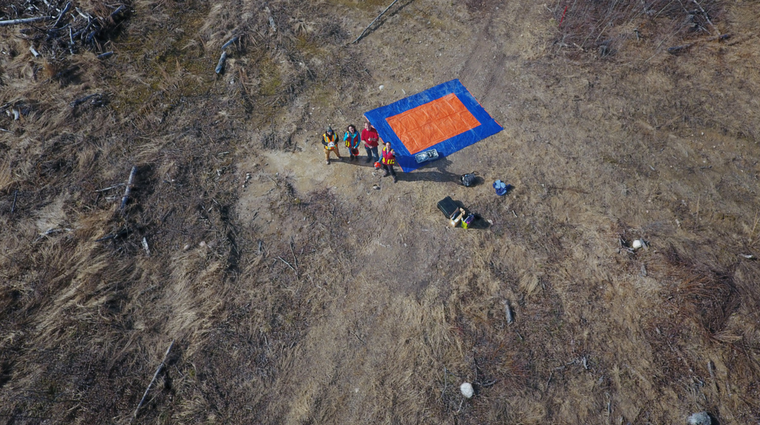
David Halstead and colleague Leila Benmerrouche were documenting a mock crime scene
in the forest ahead of their student investigators when the idea occurred: what if
there was a way to get a 3D snapshot, including aerial footage?
“This exercise made us realize conservation officers probably need environmental context more often than any other agency,” says Halstead, a senior researcher and project manager within the School of Natural Resources and Built Environment in Prince Albert.
Halstead explains conservation and environmental protection officers work in wide open spaces, where evidence of movements and actions of perpetrators such as wildlife poachers must be interpreted in complex terrain, unlimited by walls, streets or buildings.
Having an overhead view would be extremely valuable. Using an approach called Structure from Motion (SFM), overhead images could be combined with those taken at ground level to create a 3D virtual version of the crime scene.
It seemed like a project tailor-made for Saskatoon-based Draganfly Innovations, a prominent manufacturer of unmanned aerial vehicles (UAVs also known as drones) for the international market. The idea fit well with the company’s extensive expertise in applications such as accident reconstruction and search and rescue.
“Draganfly liked our pitch and had already been involved in some 3D SFM work,” Halstead says. “This seemed like a no brainer to take the same technology they had helped to develop and apply it in their public safety wheelhouse.”
The partners applied for and received an Engage Grant from the Natural Sciences and Engineering Research Council of Canada to pursue the research.
Sask Polytech brought a broad range of expertise to the table, including Halstead as UAV Operations manager and Benmerrouche, an expert in 3D imaging, remote sensing and GIS (geographic information science). Students worked as assistants and observers during field operations. Faculty members Nat Strom from Resource and Environmental Law and Ryan Galbraith from the GIS program rounded out the team.
Andrew Carson, sales lead at Draganfly, says it was Sask Polytech’s technical expertise and hands-on knowledge of the working environments of conservation officers that attracted their interest.
Draganfly sells aerial solutions to law enforcement agencies around the world, including the knowledge on how to use them most effectively and efficiently.
“Our systems provide ease of use and automated data collection, allowing law enforcement officers to easily collect information and recreate those scenes, essentially preserving their crime scene so it can be measured and observed,” Carson explains. “This is really important. When developing a UAV program, it’s not just taking a drone out and flying it, but knowing and understanding the optimal work flow and sharing that with other officers.”
So far, the research has demonstrated that UAVs allow an entire crime scene to be recorded without disturbing it. Investigators then go in on foot, capturing further video and still images. These are stitched together with software to create a “synoptic” view, capturing the whole of the scene, observed from many angles.
The 3D virtual model of the crime scene can also be used in ways not possible in real life. Forest canopy can be removed to see details below. The whole image can be tilted and rotated to, for example, demonstrate the line of sight the poacher may have used to down an animal a couple of hundred metres away.
“3D technology could conceivably allow a juror to walk through a virtual depiction of the forest long after it’s been harvested or destroyed by fire,” Halstead says.
“We believe this kind of research can have huge implications for sustainable management of our resources and for helping with environmental files such as chemical spills and industrial contamination,” he says. “We are always looking for ways to further the research.”
Visit saskpolytech.ca/research for more information.
Published March 2018.

